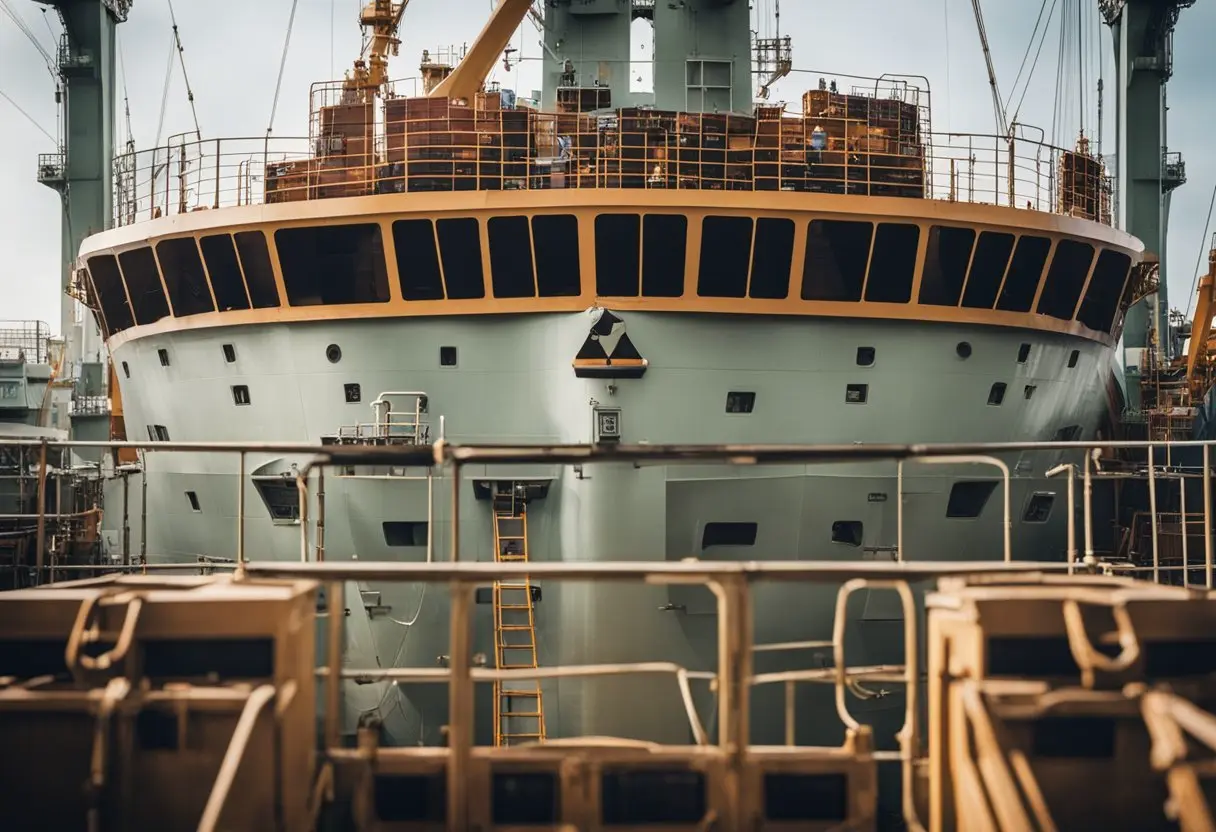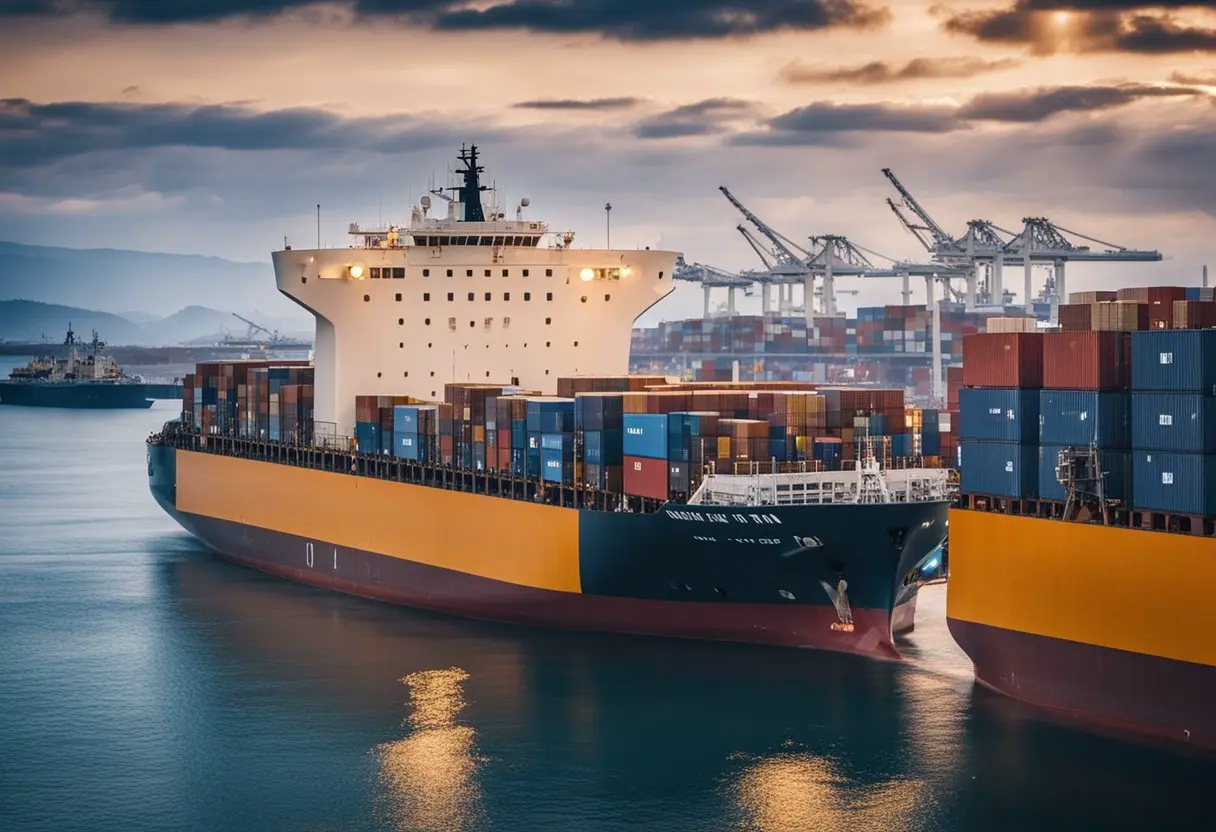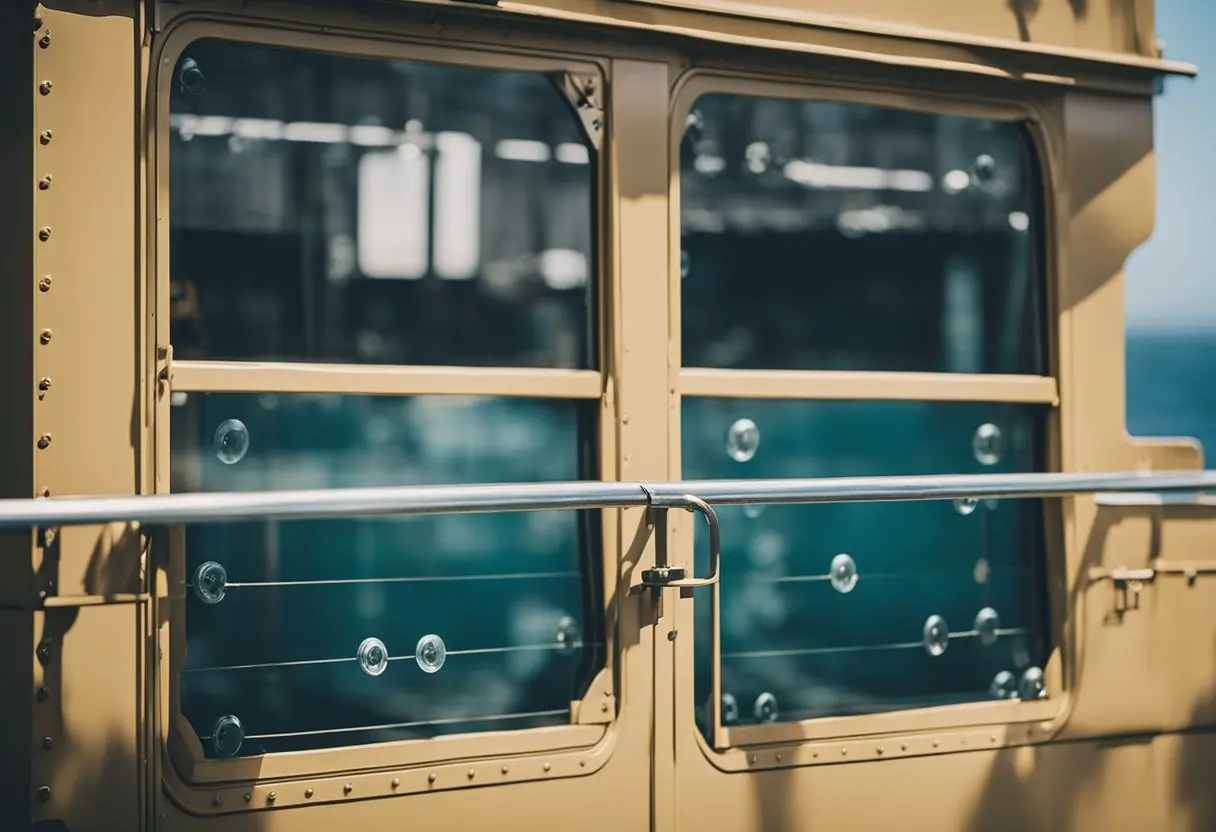Cargo ships are a common sight across the oceans, transporting goods from one place to another. These ships are massive and have unique features that make them suitable for carrying different types of cargo. One of the most striking features of cargo ships is their windows. However, unlike the windows in our homes or cars, the windows on cargo ships cannot be opened.
The reason why windows on cargo ships cannot be opened is mainly due to safety concerns. Cargo ships transport a variety of goods, including hazardous materials, which can be dangerous if they come into contact with air or water. Therefore, the windows on cargo ships are designed to be airtight and watertight to prevent any leakage of hazardous materials.
Additionally, cargo ships are often subjected to extreme weather conditions, such as storms and high winds, which can cause waves to crash against the ship’s hull. By keeping the windows closed, the ship’s crew can prevent any water from entering the ship and causing damage to the cargo or the ship itself.
Design Principles of Cargo Ship Windows

Cargo ships are designed to transport goods across the world’s oceans, and their design is optimized for efficiency and safety. One of the design principles of cargo ships is that their windows cannot be opened. This is because cargo ships are designed to withstand harsh weather conditions and rough seas, and opening windows would compromise the structural integrity of the ship.
The windows on cargo ships are typically made of thick glass or plexiglass and are fixed in place. They are designed to provide natural light and ventilation to the ship’s interior, but they cannot be opened. This is because opening windows would allow water to enter the ship, which could be dangerous in rough seas. It could also compromise the ship’s stability, making it more difficult to navigate.
Another reason why cargo ship windows cannot be opened is that the ships are designed to be airtight. This is important for several reasons. First, it helps to maintain a stable temperature and humidity level inside the ship, which is important for the safe transport of goods. Second, it helps to prevent the spread of fires and other hazards. Finally, it helps to reduce the ship’s fuel consumption by minimizing air resistance.
In addition to being airtight, cargo ship windows are also designed to be watertight. This means that they are sealed to prevent water from entering the ship. This is important for the safety of the crew and the cargo, as water can cause damage and corrosion. To ensure that the windows are watertight, they are typically fitted with rubber gaskets or other sealing materials.
Overall, the design principles of cargo ship windows prioritize safety, efficiency, and functionality. While it may be tempting to open a window for fresh air or a better view, the risks outweigh the benefits on a cargo ship. By keeping the windows fixed and sealed, cargo ships can transport goods safely and efficiently across the world’s oceans.
Safety Considerations for Seafaring Vessels
Cargo ships are designed to carry large amounts of goods across long distances. As such, safety is a top priority for these vessels, as they must navigate through a variety of weather conditions and potential hazards. This section will explore some of the safety considerations that must be taken into account when designing and operating cargo ships.
Structural Integrity
One of the most important safety considerations for cargo ships is ensuring that the vessel has the necessary structural integrity to withstand the stresses of the sea. This involves careful design and construction, as well as regular maintenance and inspections to ensure that the ship remains in good condition.
Cargo ships are subject to a variety of forces, including waves, wind, and currents, which can put significant stress on the vessel’s structure. As such, it is important to design the ship with a strong, rigid hull that can withstand these forces.
Waterproofing Requirements
Another important safety consideration for cargo ships is ensuring the vessel is properly waterproofed. This involves ensuring that all openings in the ship’s hull, including windows, hatches, and doors, are properly sealed to prevent water from entering the ship.
Windows, in particular, can be a significant source of water ingress if not properly sealed. For this reason, many cargo ships are designed without windows that can be opened. Instead, they may have small portholes that can be closed in the event of rough weather.
Emergency Procedures
Despite the best efforts to safely design and operate cargo ships, emergencies can still occur. As such, it is important to have well-defined emergency procedures in place to ensure that the crew can respond quickly and effectively to any situation.
These procedures may include drills and training exercises to ensure that the crew is prepared for a variety of scenarios, such as fires, flooding, or medical emergencies. It is also important to ensure that the ship is equipped with the necessary safety equipment, such as life rafts, fire extinguishers, and first aid kits.
Regulations Governing Maritime Equipment

Cargo ships are subject to a variety of regulations governing maritime equipment. These regulations are designed to ensure the safety of the crew, the cargo, and the environment. In this section, we will examine two types of regulations: International Maritime Organization Standards and National Maritime Safety Laws.
International Maritime Organization Standards
The International Maritime Organization (IMO) is a specialized agency of the United Nations responsible for regulating shipping. The IMO has developed many standards related to maritime equipment, including those governing windows on cargo ships.
According to the IMO’s International Convention for the Safety of Life at Sea (SOLAS), cargo ships must have watertight doors and windows. This is to prevent water from entering the ship in the event of a storm or other adverse weather conditions. SOLAS also requires that cargo ships have a certain number of escape routes, which must be clearly marked and easily accessible.
National Maritime Safety Laws
In addition to IMO standards, cargo ships must also comply with national maritime safety laws. These laws vary from country to country, but they generally cover topics such as crew training, emergency procedures, and equipment standards.
For example, in the United States, the Occupational Safety and Health Administration (OSHA) has developed a set of regulations specifically for shipyards. These regulations cover topics such as shipyard fire safety, hazardous materials handling, and personal protective equipment.
Similarly, the United Kingdom’s Maritime and Coastguard Agency (MCA) has developed a set of regulations governing the construction and equipment of ships. These regulations cover topics such as hull strength, stability, and watertight integrity.
Overall, cargo ships are subject to a wide range of regulations governing maritime equipment. These regulations are designed to ensure the safety of the crew, the cargo, and the environment, and they must be followed carefully to avoid accidents and other mishaps.
Functional Requirements of Cargo Ships
Cargo ships have specific requirements that must be met to ensure their safe and efficient operation. These requirements are established through regulations, rules, and standards set by international organizations such as the International Maritime Organization (IMO). The functional requirements of cargo ships can be broadly categorized into two main areas: cargo protection and visibility/navigation.
Cargo Protection
One of the primary functions of cargo ships is to transport goods from one place to another. As such, cargo protection is a critical requirement for these vessels. Cargo must be secured properly to prevent shifting during transit, which can cause damage to both the cargo and the ship. Cargo ships must also be designed to withstand the stresses of heavy loads and rough seas.
To meet these requirements, cargo ships are designed with special features such as cargo holds, bulkheads, and cargo securing systems. Cargo holds are designed to hold specific types of cargo and are equipped with ventilation systems to prevent the buildup of gases. Bulkheads are walls that separate the cargo holds from other areas of the ship, providing additional protection against shifting loads. Cargo securing systems include lashing points and securing devices that keep cargo in place during transit.
Visibility and Navigation
Another critical requirement for cargo ships is visibility and navigation. These vessels must be equipped with the necessary equipment to navigate safely through all types of weather conditions, including fog, rain, and darkness. They must also be designed to provide a clear line of sight for the crew to monitor the cargo and the surrounding environment.
To meet these requirements, cargo ships are equipped with a range of navigation and communication equipment, including radar, GPS, and radio systems. They also have a range of lighting systems, including navigation lights, deck lights, and cargo hold lights, to ensure that the crew can see what they are doing at all times.
In summary, cargo ships have specific functional requirements that must be met to ensure their safe and efficient operation. These requirements include cargo protection and visibility/navigation, which are critical to successfully transporting goods across the world’s oceans.
Environmental Influences on Ship Design

Cargo ships are designed to transport goods across the world’s oceans, but they must also withstand harsh environmental conditions. The design of these ships must take into account environmental factors such as corrosion, storms, and weather resistance.
Corrosion Prevention
One of the biggest environmental factors that affects cargo ships is corrosion. The saltwater and humidity of the ocean can cause significant damage to the ship’s metal components. To prevent corrosion, ships are constructed using materials that are resistant to rust and other forms of corrosion. These materials include stainless steel, galvanized steel, and aluminum.
In addition to using corrosion-resistant materials, cargo ships are also coated with special paints and coatings that protect the ship’s metal components from the corrosive effects of saltwater. These coatings are applied to the ship’s hull, decks, and other metal components.
Storm and Weather Resistance
Cargo ships must also be designed to withstand the harsh weather conditions of the open ocean. These conditions can include high winds, heavy rain, and rough seas. To ensure that cargo ships can withstand these conditions, they are designed with reinforced hulls, heavy-duty engines, and other features that make them more durable.
One of the most important features of a cargo ship’s design is its ability to navigate through rough seas. To do this, cargo ships are equipped with stabilizers that help to reduce the ship’s motion in rough seas. These stabilizers can be in the form of fins, gyroscopes, or other devices that help to keep the ship stable in rough seas.
Technological Advancements in Shipbuilding
Innovations in Window Materials
Windows on cargo ships have traditionally been made of glass, which can be a safety hazard in rough seas. As a result, new materials have been developed to provide greater safety and durability. One such material is polycarbonate, which is up to 250 times stronger than glass and can withstand impacts from flying debris. Another material is laminated glass, which is made by bonding two or more layers of glass together with a layer of plastic. This provides added strength and safety, as the plastic layer holds the glass together if it breaks.
Automation in Maritime Operations
Advancements in automation technology have also had an impact on the design of cargo ships. Automated systems can help improve efficiency and safety, and reduce the need for human intervention. For example, cargo handling systems can be automated, reducing the risk of injury to crew members and improving the speed and accuracy of loading and unloading. In addition, automated navigation systems can help ships avoid collisions and navigate through difficult weather conditions.
One area where automation has had a significant impact is in the monitoring and control of cargo ships. Many modern cargo ships are equipped with sophisticated monitoring systems that can track everything from the ship’s position to the temperature and humidity of the cargo hold. This information can be used to optimize the ship’s performance and ensure that the cargo is transported safely and efficiently.
Overall, technological advancements in shipbuilding have helped to improve the safety and efficiency of cargo ships. Innovations in window materials and automation technology have played a key role in this process, and are likely to continue to do so in the future.
Related Posts:
